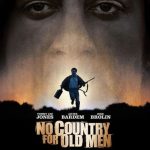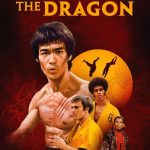Goodfellas (1990)

Goodfellas (1990): A Cinematic Masterpiece in the Annals of Gangster Films

In the pantheon of iconic crime dramas, few films stand as tall and as enduring as Martin Scorsese’s Goodfellas, the 1990 masterpiece that has cemented its place as one of the most influential and celebrated works in the gangster genre. Spanning three decades of the criminal underworld, Goodfellas is a riveting, stylistically innovative, and psychologically profound exploration of the allure and the cost of mob life.

Based on the non-fiction book “Wiseguy” by Nicholas Pileggi, the film follows the life and times of Henry Hill (played by Ray Liotta), a half-Irish, half-Sicilian New Yorker who, from a young age, is drawn into the seductive world of the Lucchese crime family. Alongside his childhood friends Jimmy Conway (Robert De Niro) and Tommy DeVito (Joe Pesci), Henry navigates the hierarchical structure of the mafia, rising through the ranks and embracing the lavish lifestyle that comes with being a “made man.”

Director Martin Scorsese, a master of the crime drama, brings his signature visual flair and thematic depth to Goodfellas, crafting a cinematic experience that is both exhilarating and unsettling. The film’s kinetic energy, propelled by a masterful use of music and editing, immerses the audience in the frenetic pace of the gangsters’ day-to-day activities, from meticulously planned heists to brutal acts of violence.

At the heart of Goodfellas is the complex and often contradictory nature of the protagonist, Henry Hill. Liotta’s performance masterfully captures the duality of a man who is simultaneously charmed by the allure of power and wealth, and tormented by the ethical compromises and personal costs of his chosen path. The film’s exploration of Henry’s psychological and emotional journey, from his youthful fascination with the mob to his eventual downfall, is a testament to Scorsese’s skill in crafting richly drawn, multifaceted characters.

The supporting cast is equally exceptional, with De Niro and Pesci delivering iconic performances as Henry’s closest associates. Pesci, in particular, is electrifying as the volatile and unpredictable Tommy, whose mercurial temper and penchant for sudden violence add an ever-present sense of danger to the proceedings.
Beyond its captivating character studies, Goodfellas also stands as a seminal work in the realm of cinematic style. Scorsese’s innovative use of techniques such as the famous Copacabana tracking shot, the seamless integration of voice-over narration, and the fluid, kinetic camera movements all contribute to the film’s distinctive visual language. These stylistic choices not only enhance the storytelling but also reflect the frenetic, high-stakes world of the characters.
Thematically, Goodfellas delves into the allure and the consequences of the gangster lifestyle, exploring the seductive power of money, status, and the illusion of control. The film’s unflinching portrayal of the violence, betrayal, and moral decay that underpin the mob’s operations serves as a counterpoint to the initial glamour and excitement that draw Henry and his friends into the criminal world.
Through its compelling narrative, rich character development, and its masterful cinematic craftsmanship, Goodfellas has solidified its place as a seminal work in the annals of cinema. Scorsese’s film stands as a singular achievement, a cinematic masterpiece that not only entertains but also challenges the audience to grapple with the moral complexities and the devastating personal toll of the gangster lifestyle.











